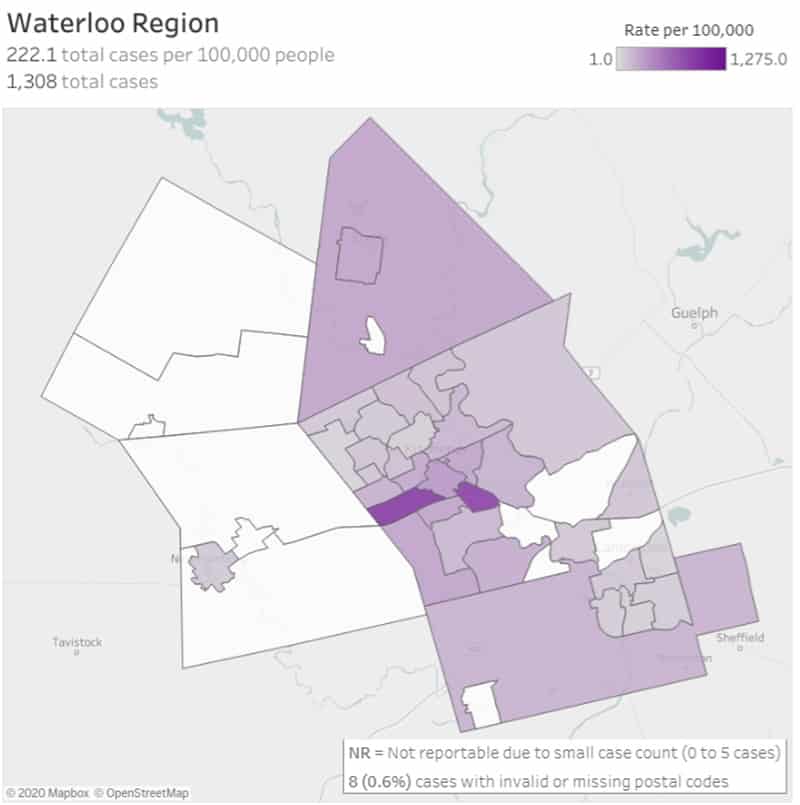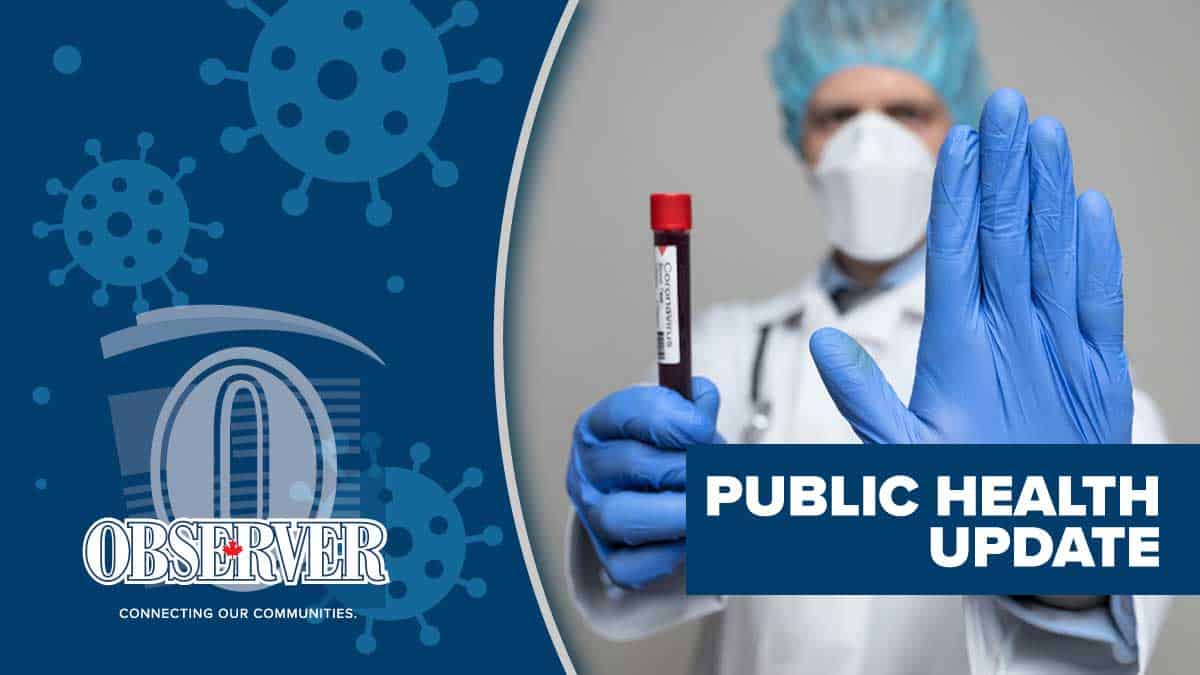The region this week saw its first coronavirus-related death in some weeks, as a community resident in their 80s succumbed to COVID-19. Overall, the numbers remain stable, with 95 active cases at midweek. There have been 1,308 cases since the virus was first detected in the region, of which 1,097 have been resolved (84 per cent).
With the decreased frequency, the Public Health department planning to lessen the frequency of its online updates to twice weekly (Tuesdays and Thursdays) instead of daily. The website has also been updated, now including mapping information by areas within the region.
The new breakdown of information shows Woolwich continues to have the region’s second-highest number of cases per 100,000 residents at 203.7, behind Kitchener at 370.2. Wellesley Township, on the other hand, has 69. The regional average is 222.1. Woolwich’s numbers are somewhat skewed due to a large number of long-term care and retirement homes, which have seen the largest outbreaks, and the smaller population relative of a measure based on 100,000 residents.

Within Woolwich, the numbers run the gamut from Woolwich North’s 298.1 and Elmira’s 298.3 to St. Jacobs being deemed not reportable due to the small number of cases. Again, the sample size is an issue. The interactive map also allows users to filter between outbreak-related cases and non-outbreak related cases.
In a video briefing Tuesday, acting medical officer of health Dr. Hsiu-Li Wang noted the change of catching the virus remains the same throughout the region, meaning those living in areas with low numbers aren’t any safer, per se.
“The number of positive cases in our region and in each neighbourhood has been significantly influenced by testing guidance, especially in the earlier stages of the COVID-19 response, where testing was limited to only certain groups and settings at greater risk such as long-term care homes and retirement homes. So areas with lower rates of COVID-19 should not be considered safer. It should be assumed that the risk of acquiring COVID-19 is present throughout the region. And we have to practice the recommended public health measures everywhere,” she said, digging into the numbers.
While the instances of new cases have declined in the region, council is looking at making mandatory the wearing of masks in public places such as stores and transit. The neighbouring Wellington-Dufferin-Guelph health unit made face coverings mandatory last month, resulting in some pressure on regional officials to do likewise.
In Tuesday’s briefing, regional Chair Karen Redman noted council will be addressing a proposed bylaw on July 6.
“Typically, there is a period of time where there is public awareness. That is part of the education program, and understanding that there are the municipalities that are sort of doing them the next day or within 24 hours. We’ll have to see what the council decides to do with the bylaw in Waterloo Region.”
The extent of the new rules and enforcement provisions are still being worked out, with Redman noting “the devil is in the details.
Current enforcement measures have stressed warnings and education, though there have been some charges laid. Chief administrative officer Mike Murray said this week two new charges were laid to private residences in Kitchener and Waterloo for gatherings of more than 10 people.
“I just encourage everybody to take emergency orders seriously and take their personal precaution seriously,” said Murray.
As of Wednesday, Wellington-Dufferin-Guelph (WDG) Public Health reported of 478 cases to date. Of those, 397 have been resolved showing a recovery rate of 83.1 per cent. There have been 37 deaths in the catchment area.
The Ministry of Health reported 35,068 cases of the novel coronavirus in Ontario at midweek, an increase of 0.4 per cent over the previous day. There have been 2,672 deaths attributed to the virus, representing a mortality rate of 7.6 per cent. The ministry reports 30,344 cases (86.5 per cent) have been resolved.
The latest numbers from Health Canada show 104,204 confirmed cases of COVID-19 nationwide, with 8,591 related deaths, a mortality rate of 8.2 per cent.









